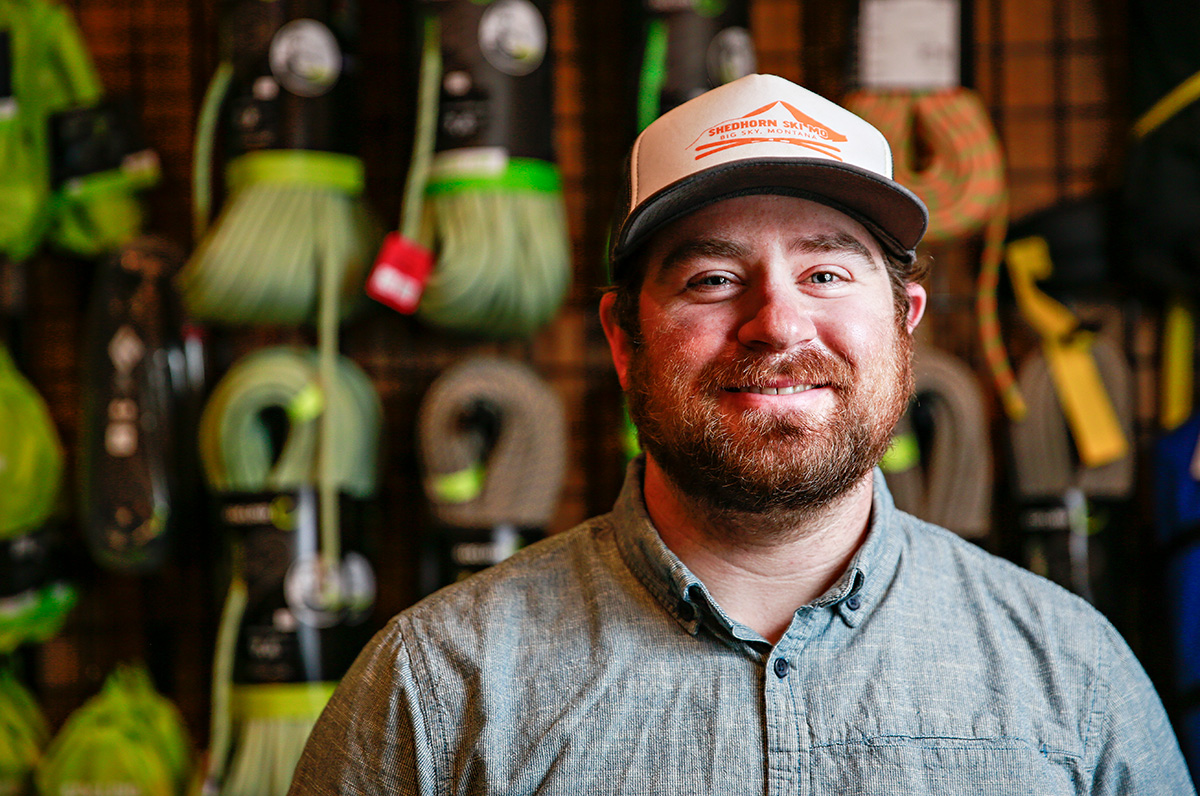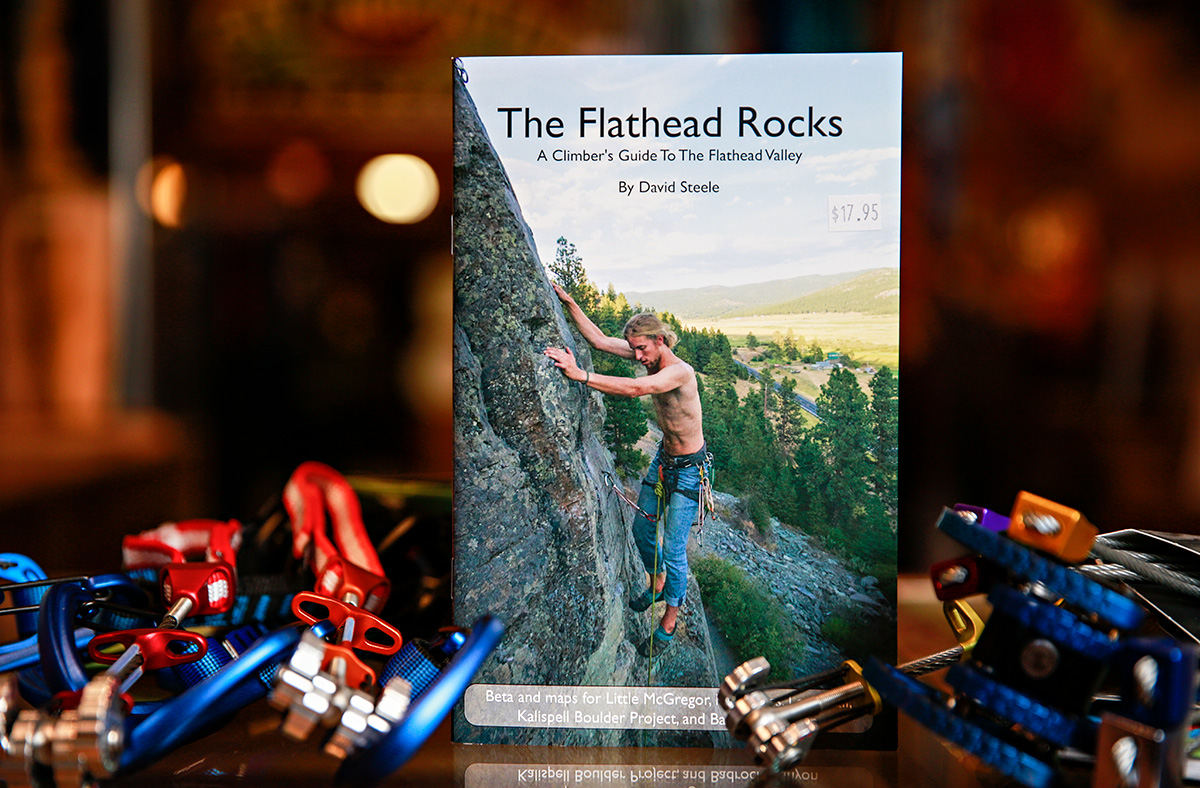Getting a Grip on the Flathead
Area climber David Steele publishes route beta to help navigate the crags of the Flathead Valley
By Tristan Scott
For years, the most comprehensive resource for rock climbing advice in the Flathead Valley has been kept under lock and key by the brain trust at Rocky Mountain Outfitter in downtown Kalispell, a rarefied asset tapped by dirtbag climbers who slink into the shop and ply the staff for route beta, exempt from the conventions of commerce requiring them to actually buy anything.
As business models go, it hasn’t been an especially lucrative one — occasionally someone might purchase a quickdraw or a sling, and if the climbing expedition is successful, a six-pack of local suds might turn up at the counter as a token of gratitude. So goes the sanctity of the climbers’ alliance.
Indeed, it’s an accepted form of currency that for many years has helped sustain a small but formidable climbing scene in an area best known for its rotten rock and breathtaking views, a region that has both benefited from and been constrained by the dearth of published materials about its scrappy little climbing crags.
And then David Steele upended the whole system by publishing a comprehensive guidebook, and he did so while in RMO’s gainful employ. Sort of.
To be fair, Steele, along with the rest of RMO’s faithful staff, was on hiatus from his job during the early stages of the pandemic when the idea for a new guidebook struck him.
“Because the pandemic closed where I was working, I didn’t really have a job to go to,” Steele said recently, having returned to his regularly scheduled gig. “It was this weird sort of professional limbo and that gave me a fair bit of time to sink my teeth into a project, which really I’d been thinking about for some time.”
“My goal was to create a resource that kind of fills in the blanks of the local climbing scene, and to put something out there so that someone who’s new to climbing can pick it up, stick it in their pack and actually find the routes,” he added.

Born and raised in the Flathead Valley, Steele has been climbing since middle school, and he’s honed his chops in recent years through stints as a professional climbing guide, working with climbers of all levels. His enthusiasm for the sport is contagious, and his talent for articulating climbing beta, which truly deserves a language all its own, is nearly unrivaled in Northwest Montana.
“I don’t know if it gets any more esoteric than trying to describe climbing route information, so I knew I wanted to include maps and photographs to make the routes as clear as possible,” Steele said.
He bought a second-hand drone to gain an aerial vantage to aid in visual depictions and, after a few crashes, began to get a feel for how the book would take shape. He taught himself Adobe InDesign and set to work “filling in the blanks,” conceding early on that he didn’t have the time or capacity to conceive of a new guidebook that covers all of Northwest Montana, which would have to include the Stone Hill Climbing Area, a series of walls that does have a guidebook, outdated though it is.
So, Steele focused his attention on the Little McGregor and Lost Wall areas, as well as the Kalispell Boulder Project at Lawrence Park and Badrock Canyon. And, of course, the Kila Crags, the beloved local climbing area just a stone’s throw from town, and which RMO owner Jandy Cox once affectionately characterized as being “chossy, and it’s dirty, but it’s rock and at least it’s close.”
“It doesn’t take a geologist to know that our rock isn’t exactly world class,” Steele acknowledged. “But when you don’t have too many people fighting for it, you’re able to enjoy what you do have even more.”
With new color maps and photographs, Steele’s final product is 60 pages front to back and costs $17.95. It’s a measurable improvement over what did exist, which amounted to a few scant route details available online and in the hand-drawn, out-of-print pamphlets shimming a few wobbly coffee tables in the Flathead Valley.
And it offers the only comprehensive information on the Lost Wall area near Tally Lake, which Steele described as “some of the most interesting climbing in the Flathead.”
“What I wanted to do was keep it pamphlet-style but kind of up the ante,” Steele said. “Jandy said the book makes the climbing look better than it actually is, which I took as a compliment.”